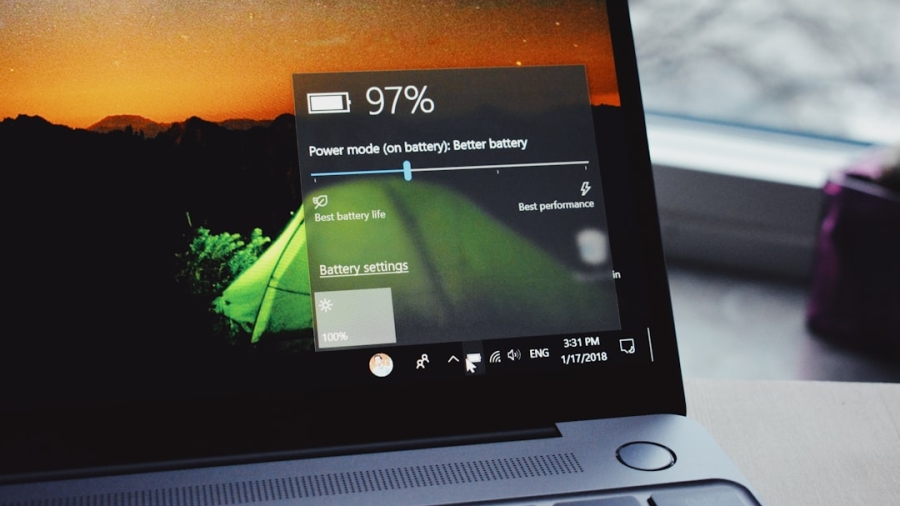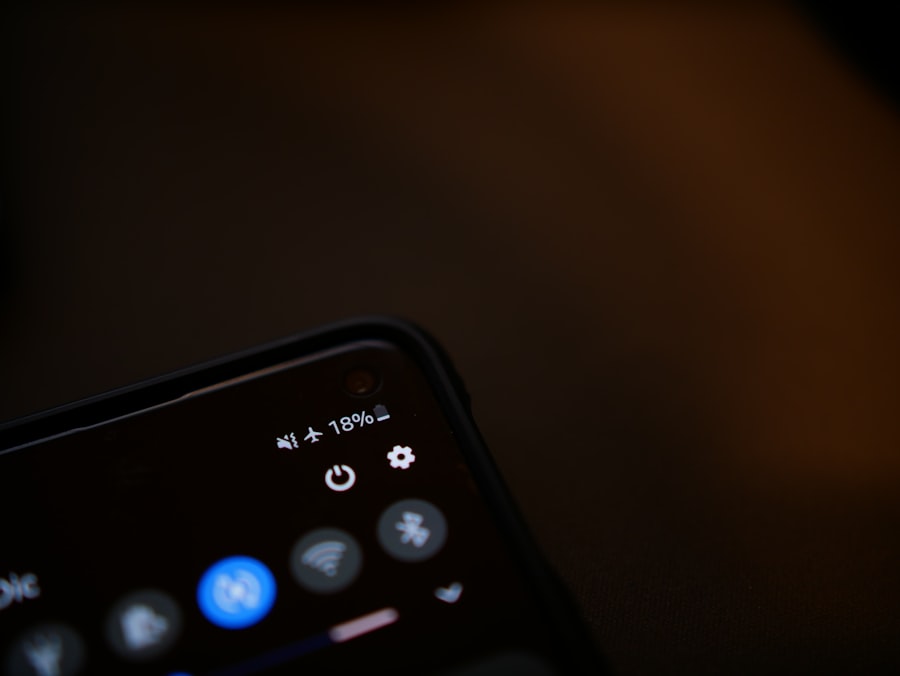Battery drain is a common concern for users of smartphones, tablets, and laptops, as it directly impacts the usability and convenience of these devices. At its core, battery drain refers to the depletion of a device’s battery power over time, which can be influenced by a multitude of factors. The most significant contributors to battery drain include screen brightness, app usage, and background processes.
For instance, high screen brightness can consume a substantial amount of energy, especially when combined with resource-intensive applications such as games or video streaming services. Additionally, certain apps may continue to run in the background, consuming power even when they are not actively being used. Understanding these factors is crucial for users who wish to extend their device’s battery life and enhance their overall experience.
Moreover, the age and condition of the battery itself play a pivotal role in how quickly it drains. Over time, batteries can lose their ability to hold a charge due to chemical degradation, which is a natural process that occurs with lithium-ion batteries commonly used in modern devices. This degradation can lead to a noticeable decrease in battery performance, resulting in more frequent charging cycles and shorter usage times.
Furthermore, environmental factors such as temperature can also affect battery efficiency; extreme heat or cold can lead to accelerated battery drain. By comprehensively understanding the various elements that contribute to battery drain, users can take proactive measures to mitigate these effects and prolong the lifespan of their devices.
Key Takeaways
- Understanding Battery Drain:
- Battery drain can be caused by apps running in the background, high screen brightness, and location services.
- Adjusting Display Settings:
- Lowering screen brightness and using dark mode can help conserve battery life.
- Managing Background Apps:
- Closing unused apps and disabling auto-sync can reduce battery drain.
- Utilizing Power Saving Mode:
- Enabling power saving mode can limit background activity and extend battery life.
- Limiting Location Services:
- Disabling location services for apps that don’t require it can save battery power.
- Optimizing Charging Habits:
- Avoiding overcharging and using the right charger can prolong battery lifespan.
- Using Battery Saver Apps:
- Installing battery saver apps can help manage power consumption and optimize battery usage.
- Regularly Updating Software:
- Keeping your device’s software up to date can improve battery efficiency and performance.
Adjusting Display Settings
One of the most effective ways to combat battery drain is by adjusting display settings on your device. The display is often one of the largest consumers of power, particularly when it is set to high brightness levels or when features like adaptive brightness are enabled. By manually lowering the screen brightness or setting it to a level that is comfortable yet energy-efficient, users can significantly reduce the amount of power consumed.
Additionally, utilizing features such as dark mode can further enhance battery life, especially on OLED screens where darker pixels consume less energy compared to brighter ones. This simple adjustment can lead to noticeable improvements in battery longevity throughout the day. Another important aspect of display settings is the screen timeout duration.
Many devices come with a default setting that keeps the screen active for an extended period, which can lead to unnecessary battery drain if the device is left idle. By reducing the screen timeout duration to a shorter interval, users can ensure that their device automatically dims or turns off the display when not in use, thereby conserving energy. Furthermore, disabling features such as always-on display or live wallpapers can also contribute to reduced power consumption.
By taking control of display settings, users can create a more energy-efficient environment for their devices, ultimately leading to longer usage times between charges.
Managing Background Apps
Managing background apps is another critical strategy for minimizing battery drain on devices. Many applications continue to run processes in the background even when they are not actively being used, which can lead to significant power consumption over time. Users should regularly review which apps are allowed to run in the background and disable those that are unnecessary.
Most operating systems provide options to restrict background activity for specific applications, allowing users to prioritize essential apps while limiting the power-hungry ones. This proactive approach not only helps conserve battery life but also enhances overall device performance by freeing up system resources. In addition to disabling background activity for certain apps, users should also be mindful of app updates and their impact on battery usage.
Some updates may introduce new features that require more processing power or data usage, leading to increased battery drain. Regularly checking app settings and permissions can help users identify which applications are consuming excessive power and make informed decisions about their usage. Furthermore, uninstalling unused or rarely used applications can also contribute to better battery management.
By taking these steps to manage background apps effectively, users can significantly improve their device’s energy efficiency and enjoy longer periods of uninterrupted use.
Utilizing Power Saving Mode
Power saving mode is a built-in feature available on most modern devices designed specifically to extend battery life during critical moments when power is running low. When activated, this mode typically reduces the performance of the device by limiting background processes, lowering screen brightness, and disabling non-essential features such as animations and location services. By doing so, power saving mode allows users to stretch their remaining battery life significantly longer than they would under normal operating conditions.
This feature is particularly useful during long days away from a charger or during travel when access to power sources may be limited. In addition to its immediate benefits, utilizing power saving mode can also help users develop better habits regarding their device usage. By becoming accustomed to activating this mode during low-battery situations, users may begin to consciously limit their use of power-hungry applications and features even when not in power-saving mode.
This shift in behavior can lead to a more sustainable approach to device management overall. Furthermore, many devices allow users to customize power saving settings according to their preferences, enabling them to strike a balance between performance and battery conservation that suits their individual needs.
Limiting Location Services
Location services are an essential feature for many applications, providing users with navigation assistance, location-based recommendations, and other functionalities that enhance their experience. However, these services can also be significant contributors to battery drain if left unchecked. When location services are enabled for multiple apps simultaneously or set to high accuracy mode, they can continuously use GPS and other sensors, leading to rapid depletion of battery power.
To mitigate this issue, users should consider limiting location services only to those applications that genuinely require them for optimal functionality. One effective strategy is to adjust location settings on a per-app basis. Most devices allow users to choose between options such as “Always,” “While Using,” or “Never” for each application that requests location access.
By selecting “While Using” for most apps, users can ensure that location services are only active when they are actively engaging with the app itself. Additionally, turning off location services entirely when they are not needed can provide substantial energy savings. By being mindful of how location services are utilized on their devices, users can significantly reduce unnecessary battery drain while still enjoying the benefits of location-based features when required.
Optimizing Charging Habits
Optimizing charging habits is crucial for maintaining both battery health and longevity over time. One common misconception is that it is necessary to fully discharge a lithium-ion battery before recharging it; however, this practice can actually lead to faster degradation of the battery’s capacity. Instead, it is advisable to charge devices when they reach around 20% battery life and unplug them once they reach 80-90%.
This partial charging method helps maintain optimal battery health and extends its overall lifespan by preventing deep discharges that can stress the battery. Additionally, using the right charger is essential for efficient charging practices. Many devices come with fast-charging capabilities; however, using third-party chargers that do not meet manufacturer specifications can lead to overheating and potential damage over time.
It is best practice to use the original charger provided with the device or certified alternatives that comply with safety standards. Furthermore, avoiding charging your device overnight or leaving it plugged in for extended periods after reaching full charge can also help prevent unnecessary wear on the battery. By adopting these optimized charging habits, users can ensure that their devices remain functional for longer periods while preserving battery health.
Using Battery Saver Apps
Battery saver apps have gained popularity as tools designed to help users manage their device’s power consumption more effectively. These applications often provide insights into which apps are consuming the most energy and offer suggestions for optimizing settings based on individual usage patterns. Some battery saver apps even include features that allow users to automate certain functions—such as disabling background processes or adjusting display settings—when the battery reaches a specific threshold.
By leveraging these tools, users can take a more proactive approach toward managing their device’s energy consumption. However, it is essential for users to choose reputable battery saver apps from trusted developers. Some applications may promise significant improvements but could instead introduce unwanted ads or even malware into the system.
Reading reviews and checking ratings before downloading any app is crucial for ensuring safety and effectiveness. Additionally, while these apps can be beneficial in managing battery life, they should not replace fundamental practices such as adjusting display settings or managing background apps; rather, they should complement these strategies for optimal results.
Regularly Updating Software
Regularly updating software is an often-overlooked aspect of maintaining device performance and efficiency. Software updates frequently include optimizations that enhance battery management capabilities and fix bugs that may contribute to excessive power consumption. Manufacturers continuously work on improving their operating systems and applications based on user feedback and technological advancements; therefore, keeping software up-to-date ensures that users benefit from these enhancements.
Neglecting updates may result in missed opportunities for improved performance and increased battery life. Moreover, updates often include security patches that protect devices from vulnerabilities that could be exploited by malicious software or hackers. A compromised device may experience increased battery drain due to unauthorized processes running in the background or other security-related issues.
By regularly updating software, users not only enhance their device’s performance but also safeguard against potential threats that could impact both functionality and battery life. In conclusion, staying current with software updates is an essential practice for anyone looking to optimize their device’s efficiency and longevity while ensuring a secure user experience.
If you’re interested in optimizing your smartphone’s performance, particularly for gaming, you might find the article “How to Choose a Smartphone for Games” quite enlightening. It provides valuable insights into the specifications and features you should look for in a smartphone to ensure a smooth and enjoyable gaming experience. This can be particularly useful when considering how gaming can impact battery life and what features might help conserve it. You can read more about it by visiting How to Choose a Smartphone for Games.
FAQs
What are some tips for maximizing battery life on smartphones?
Some tips for maximizing battery life on smartphones include adjusting screen brightness, turning off unnecessary features like Bluetooth and location services, closing unused apps, and using power-saving mode when necessary.
How does screen brightness affect battery life on smartphones?
Higher screen brightness requires more power, so lowering the brightness can help conserve battery life on smartphones.
Why is it important to turn off unnecessary features like Bluetooth and location services to maximize battery life on smartphones?
Turning off unnecessary features like Bluetooth and location services can help conserve battery life by reducing the amount of power the smartphone is using for these functions.
How does closing unused apps help maximize battery life on smartphones?
Closing unused apps can help maximize battery life on smartphones by reducing the amount of background processes and power consumption.
What is power-saving mode and how does it help maximize battery life on smartphones?
Power-saving mode is a feature on smartphones that reduces the device’s performance and limits background processes to conserve battery life. It can be activated to extend the battery life when necessary.



